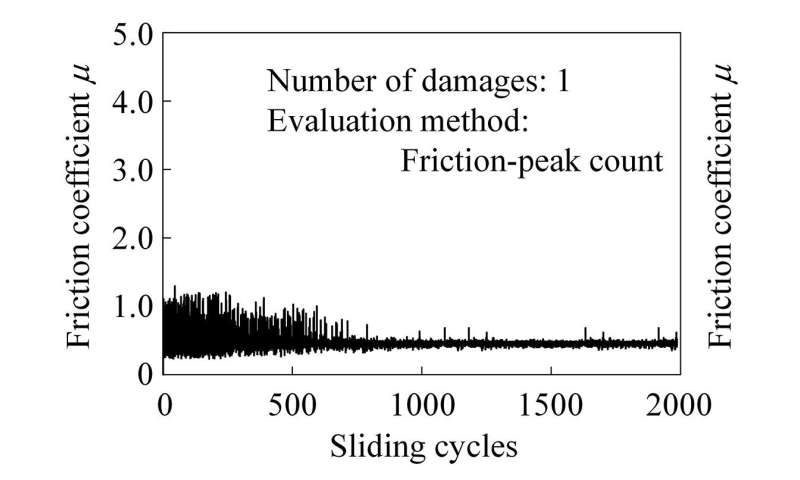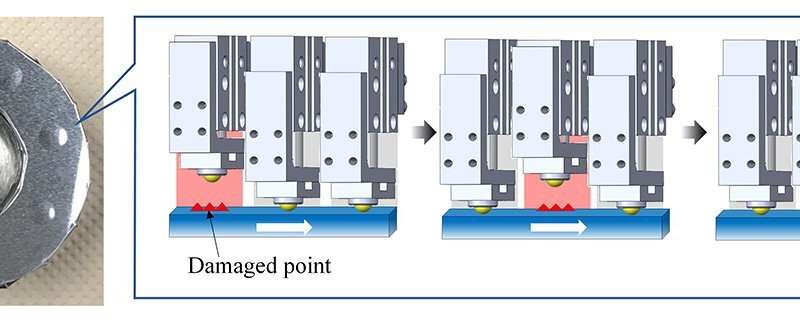Machine learning stabilizes mechanical parts, protects from damaging friction conditions
Mechanical systems in which moving parts come into regular contact are prone to damage due to the effects of friction. Researchers at Tohoku University have developed a contact control system, driven by artificial intelligence, to greatly reduce contact with damaged areas. Although currently tested only in lab experiments, they believe it could eventually help many types of machinery run more smoothly.
“This could shift the design strategy of mechanical systems away from the traditional approach of developing new and superior materials to developing surfaces that can actively adapt to reduce the damage,” says Professor Motoyuki Murashima.
The work was a collaboration between Murashima at Tohoku University’s Department of Mechanical Systems Engineering and colleagues at Nagoya University and the Korea Photonics Technology Institute in South Korea. The research is published in the journal Tribology International.
The research is focused on the potential of innovative materials possessing “morphing surfaces,” which can be changed depending on the environment they operate in. These materials are being developed by several research groups to mimic a common flexibility found in living systems, such as leaf surfaces that change in response to variations in humidity. One example in engineering, previously developed by Murashima and colleagues, is a surface composed of a diaphragm supported by hard substrate, with changes in stress pressure altering the surface morphologies.
The team developed an artificial intelligence procedure in which sensors analyze the friction between two surfaces. Having detected where damage is occurring, the procedure can then use the “morphing” capacity of the surface to minimize the frictional contact with damaged regions.
“This is the first research in the world to use artificial intelligence to control the shape of morphing surfaces and successfully detect the position of damage on interacting surfaces,” says Murashima.
As the analysis and adjustment proceeded in simulated test cases, the researchers were able to achieve a steady reduction in the fluctuated friction caused by contact between affected parts of the material under investigation.
The proof-of-concept system used disks spinning within a cylinder. The crucial next step will be to move closer to situations in which the procedure could be applied to real engineering challenges, such as industrial machinery. The ultimate aim is to allow a wide range of machinery to operate with less routine wear and damage, achieving longer useful lifespans and cost savings due to less frequent part replacements.
-
![Fighting friction to protect machinery]()
How to avoid contact with damaged position using morphing surfaces. Credit: Motoyuki Murashima
-

The friction stabilizes as AI learning progresses. Credit: Motoyuki Murashima
“An important next step is to develop more sophisticated learning and control algorithms that will reduce the time needed to learn the characteristics of the analyzed surfaces and therefore achieve more refined and speedier control that prevents damage,” says Murashima.
More information:
Motoyuki Murashima et al, Novel friction stabilization technology for surface damage conditions using machine learning, Tribology International (2023). DOI: 10.1016/j.triboint.2023.108280
Citation:
Machine learning stabilizes mechanical parts, protects from damaging friction conditions (2023, March 3)
retrieved 3 March 2023
from https://techxplore.com/news/2023-03-machine-stabilizes-mechanical-friction-conditions.html
This document is subject to copyright. Apart from any fair dealing for the purpose of private study or research, no
part may be reproduced without the written permission. The content is provided for information purposes only.
For all the latest Technology News Click Here
For the latest news and updates, follow us on Google News.

